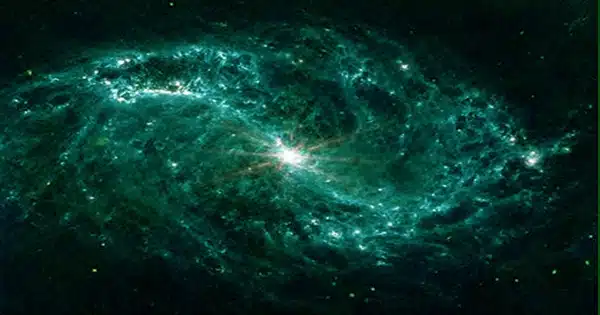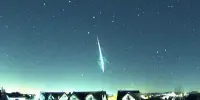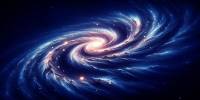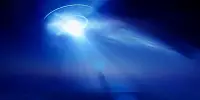These items shine 100 times brighter than they should. NASA’s NuSTAR X-ray telescope observations indicate a possible answer to this conundrum.
Ultra-luminous X-ray sources (ULXs) generate around 10 million times the energy of the Sun, often surpassing the Eddington limit by 100 to 500 times. Scientists are perplexed as to how these cosmic objects can be so brilliant. For the first time, a ULX was measured using NASA’s Nuclear Spectroscopic Telescope Array (NuSTAR) in a research published in The Astrophysical Journal. The results show that ULXs do certainly exceed the Eddington limit, possibly because of their powerful magnetic fields. An alternative hypothesis suggests that the strong magnetic fields of ULXs distort atoms into elongated shapes, reducing the ability of photons to push atoms away and ultimately increasing an object’s maximum possible brightness.
Exotic cosmic phenomena known as ultra-luminous X-ray sources emit around ten million times the energy of the Sun. They’re so brilliant that they appear to exceed a physical limit known as the Eddington limit, which limits how luminous an object can be depending on its mass. Ultra-luminous X-ray sources (ULXs) often surpass this limit by 100 to 500 times, perplexing experts.
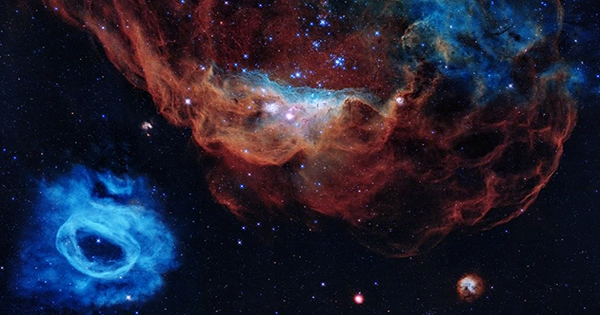
Researchers describe a first-of-its-kind measurement of a ULX acquired using NASA’s Nuclear Spectroscopic Telescope Array (NuSTAR) in a recent paper published in The Astrophysical Journal. The discovery indicates that these light emitters are as brilliant as they appear and that they exceed the Eddington limit. According to one theory, the ULX’s powerful magnetic fields are responsible for its record-breaking brilliance. However, scientists can only test this theory by observation: ULX magnetic fields, which are billions of times more powerful than the strongest magnets ever created on Earth, cannot be replicated in a lab.
Exceeding the Limit: Photons are light particles that exert a slight pressure on anything they come into contact with. If a cosmic object emits enough light per square foot, the outward push of photons can overcome the item’s gravity’s inward pull. When this happens, an item has surpassed the Eddington limit, and the light from the object should drive away any gas or other material that is falling toward it.
That transition, when light triumphs over gravity, is crucial because the material falling onto a ULX is the source of its brightness. Scientists regularly witness this in black holes: when their enormous gravity draws in stray gas and dust, those things may heat up and emit light.
Scientists used to believe that ULXs were black holes ringed by brilliant gas reservoirs. However, NuSTAR data revealed in 2014 that M82 X-2, a ULX, is actually a less massive object known as a neutron star. Neutron stars, like black holes, arise when a star dies and collapses, cramming more than the mass of our Sun into a region little larger than a mid-sized city.
This tremendous density produces a gravitational force on the neutron star’s surface that is 100 trillion times stronger than the gravitational pull on Earth’s surface. When gas and other material are drawn in by gravity, they accelerate to millions of miles per hour, releasing enormous energy when they contact the neutron star’s surface. (A marshmallow placed on a neutron star’s surface would be struck with the energy of a thousand hydrogen bombs.) This generates the high-energy X-ray photons seen by NuSTAR.
M82 X-2, like a cosmic parasite, steals around 9 billion trillion tons of material every year from a neighboring star, or nearly 1 1/2 times the mass of Earth, according to subsequent research that targeted the same ULX at the center of the 2014 finding. Scientists can predict how bright the ULX should be based on the quantity of material impacting the neutron star’s surface, and their estimates match independent observations of its brightness. The findings revealed that M82 X-2 surpasses the Eddington limit.
No Illusions: If scientists can confirm the brightness of more ULXs, they may be able to put an end to a lingering notion that would explain the apparent brightness of these objects without requiring ULXs to surpass the Eddington limit. Based on studies of other cosmic objects, this idea proposes that powerful winds produce a hollow cone around the light source, focusing the majority of the emission in one direction. If directed straight toward Earth, the cone may produce an optical illusion, giving the impression that the ULX was exceeding the brightness limit.
Even if this is true for some ULXs, the latest research implies that intense magnetic fields twist the approximately spherical atoms into elongated, stringy forms. This would diminish photons’ capacity to force atoms away, thus raising the maximum achievable brightness of an item.
“These observations allowed us to see the effects of these incredibly strong magnetic fields that we could never reproduce on Earth with current technology,” said Matteo Bachetti, an astrophysicist at Italy’s National Institute of Astrophysics’ Cagliari Observatory and the study’s lead author. “This is the wonder of astronomy.” Observing the sky allows us to learn more about how the universe operates. On the other hand, we can’t actually set up tests to achieve immediate results; we have to wait for the cosmos to reveal its secrets.”
